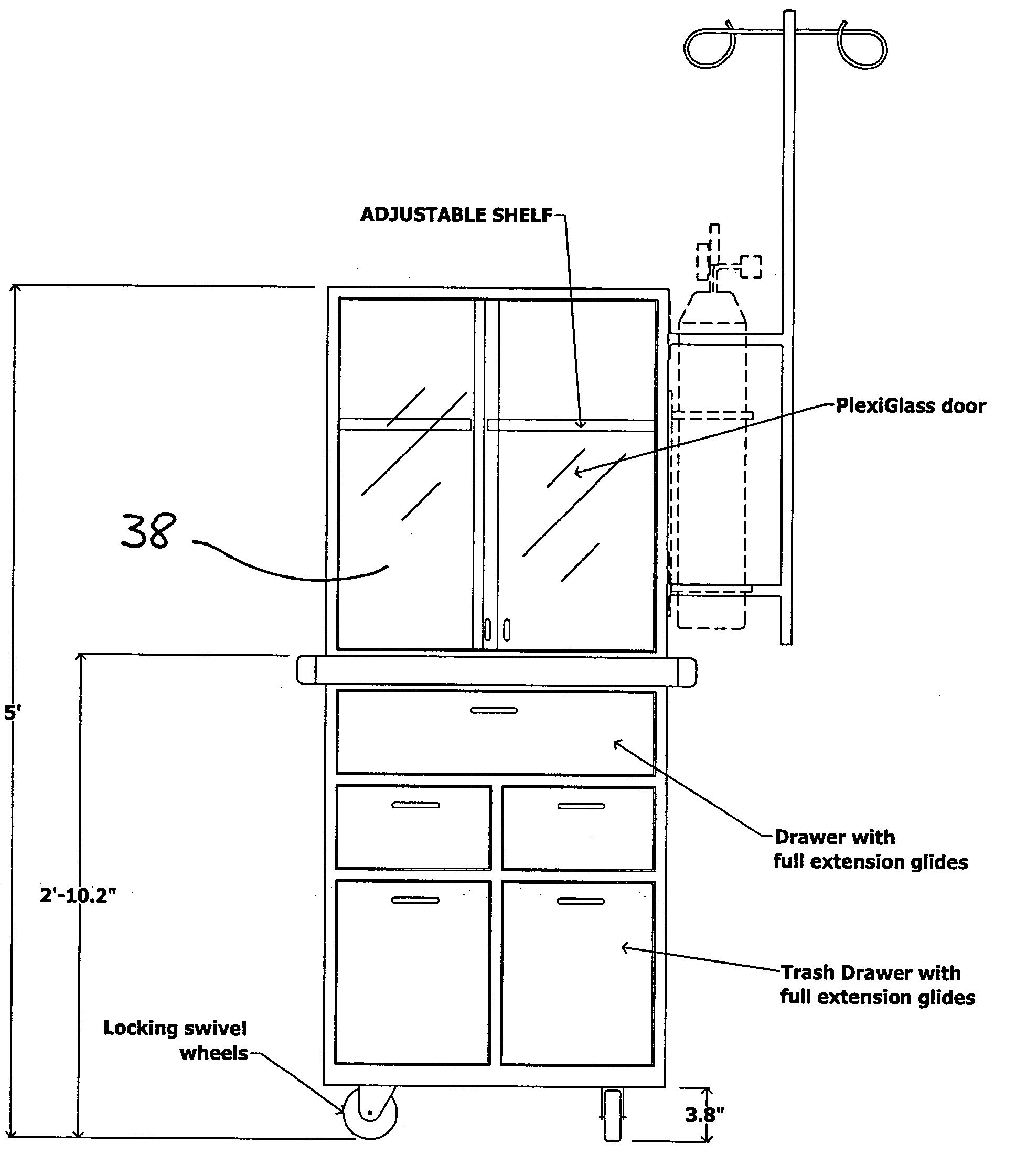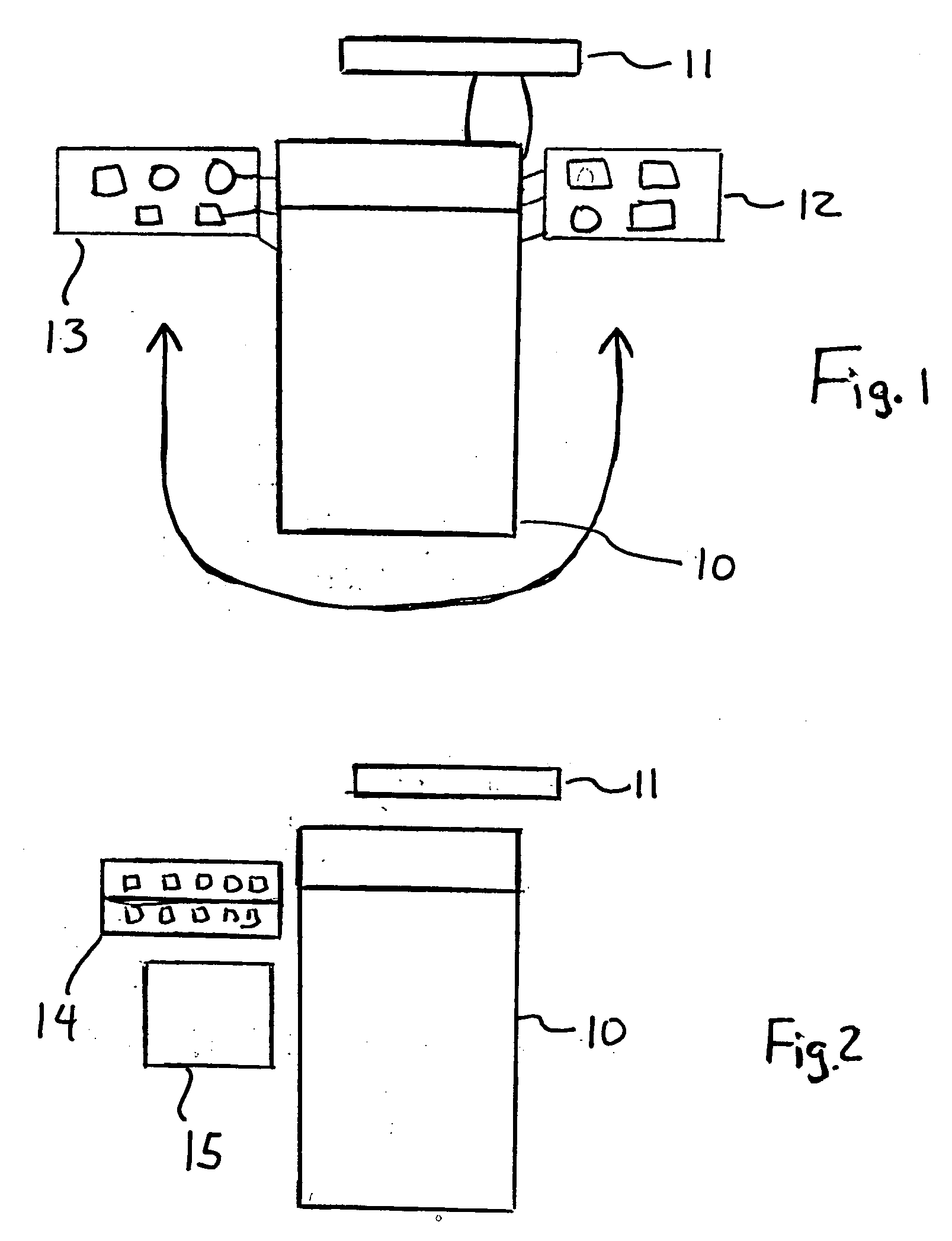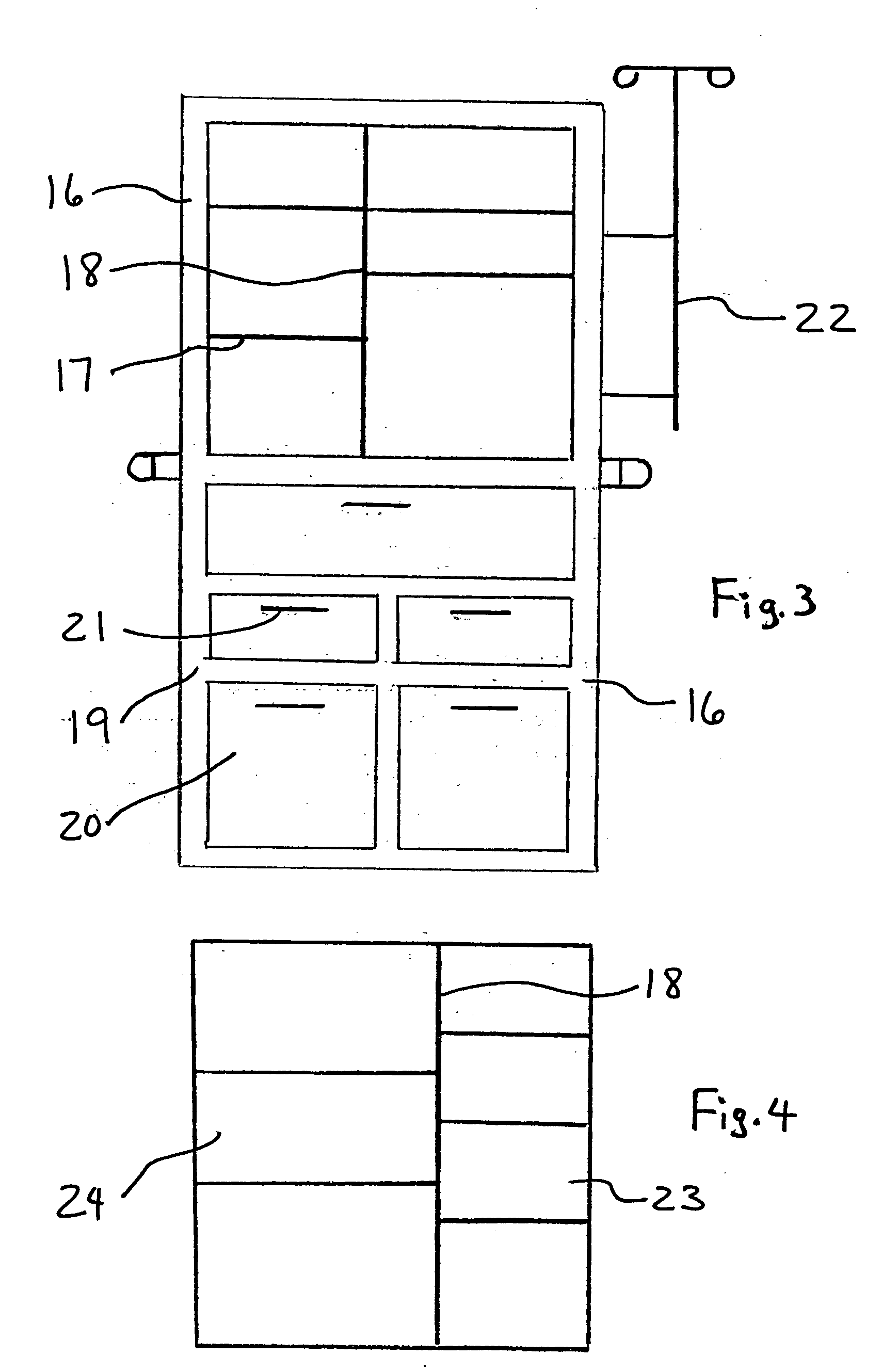Method and workstation for single patient medical care
a single patient and workstation technology, applied in the field of single patient medical care, can solve the problems of home not being a hospital, no solution, and a large amount of medical equipment, and achieve the effects of improving patient comfort and speed of recovery, facilitating access to medical equipment, and efficient medical equipment arrangemen
- Summary
- Abstract
- Description
- Claims
- Application Information
AI Technical Summary
Benefits of technology
Problems solved by technology
Method used
Image
Examples
Embodiment Construction
FIG. 1 illustrates serious problem with the current way that most health care is administered today. In a typical patient room, there is a bed 10 and a wall panel 11. The wall panel can contain covers for vents that lead to central resources for air of essentials needed by a patient. Also included in a patient's room two table surfaces 12 and 13 that contain various pieces of medical equipment for the patient. The arrow indicates the path traveled by a caregiver during the process of administering to the patient. As shown, the caregiver has to cover a substantial area moving between two sets of equipment on each side of the bed. Some patient rooms may only have one surface for equipment and medicine, however in these cases some equipment is usually hanging from the I.V. pole. Furthermore, there is still equipment on both sides of the patient. When there is only one caregiver (which is usually the case especially in a home healthcare environment) and an emergency develops, there is p...
PUM
 Login to View More
Login to View More Abstract
Description
Claims
Application Information
 Login to View More
Login to View More - R&D
- Intellectual Property
- Life Sciences
- Materials
- Tech Scout
- Unparalleled Data Quality
- Higher Quality Content
- 60% Fewer Hallucinations
Browse by: Latest US Patents, China's latest patents, Technical Efficacy Thesaurus, Application Domain, Technology Topic, Popular Technical Reports.
© 2025 PatSnap. All rights reserved.Legal|Privacy policy|Modern Slavery Act Transparency Statement|Sitemap|About US| Contact US: help@patsnap.com



